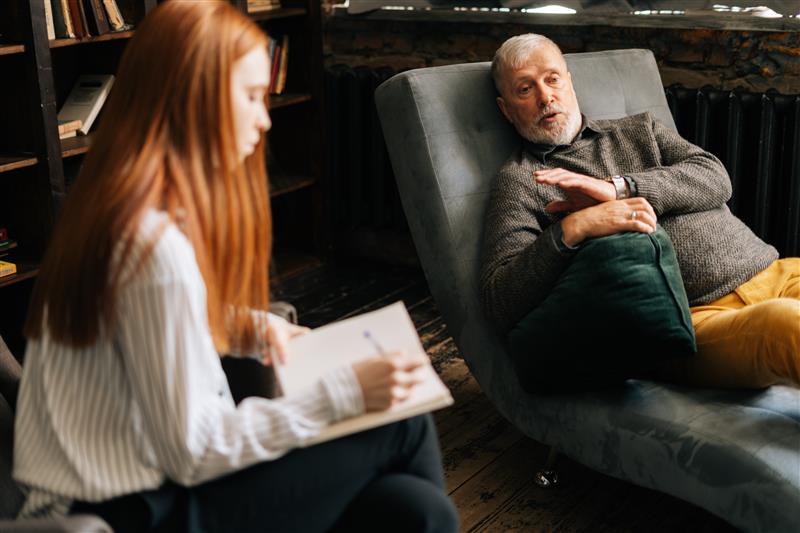When someone experiences trauma, it can feel like life has been broken into two parts: the time before and the time after the event. Healing after trauma is not just about moving on or forgetting. It is about finding a way to live with the experience without being trapped by it.
In psychoanalysis, especially through the teachings of Jacques Lacan, we understand trauma as something that deeply shakes how a person relates to themselves, to others, and to the world. It’s not only the event itself that matters, it’s how the event has left a lasting mark, often in ways that are hard to put into words.
In this article, we explore how psychoanalytic treatment offers a unique path for healing one that focuses not just on managing symptoms, but on helping people rebuild their lives from a deeper place.
Trauma: A Break in How We Understand Ourselves

Sigmund Freud, the founder of psychoanalysis, showed that traumatic experiences often return again and again in our thoughts, dreams, and actions. It’s not because people want to suffer, it’s because the mind is trying to make sense of something that overwhelmed it.
Lacan added to this idea by explaining that trauma happens when something so powerful or painful breaks through our usual way of making sense of life. It’s an experience that words can’t fully explain. That’s why after trauma, people often feel confused, lost, or disconnected.
Modern psychoanalytic writers, tell us that trauma is not just something that happened in the past. It continues to affect a person’s life until it is worked through in therapy.
How Psychoanalytic Treatment Helps with Trauma

In psychoanalytic treatment, healing begins not by focusing on “fixing” the trauma, but by creating a safe space where the person can start to speak about what happened even if at first, they can only talk around it.
Rather than forcing a person to retell painful memories or rushing to make them feel better, psychoanalysis in Melbourne listens carefully to the way they speak, to the gaps, the repetitions and various associations of images, which are described by the person. It trusts that little by little, the person will find their own way of putting into words what once felt unspeakable.
Véronique Voruz (2013), a contemporary psychoanalyst, reminds us that healing doesn’t mean becoming “normal” again. It means finding a new way to live, one that makes space for what has been lost or changed by trauma.
Speaking and Working Through: Finding New Ways to Cope

In many therapies, coping is taught as a set of techniques like breathing exercises or grounding methods and these can certainly help.
But psychoanalysis sees coping differently. It sees healing as building a new story about oneself, a new way to live with the pain. The symptom, whether it’s anxiety, nightmares, or emotional numbness, is not just a problem to erase. It’s a message. It shows where the trauma still speaks.
As Colette Soler (2014) writes, we don’t get rid of symptoms by force. We listen to them. When people are finally able to express their pain in words, rather than only through their bodies or actions, they often find that their symptoms loosen some of their grip or power over the person’s life.
The Role of Long Term Therapy in Long-Term Recovery

In psychoanalysis, the therapist does not tell the person what to do or offer quick advice. Instead, the therapist listens carefully, helping the person find their own words, their own understanding of what has happened to them.
Lacan called this attitude the “desire of the analyst”, meaning that the therapist holds open a space for desire, a space for the person to speak freely about what comes to their mind, without being judged or rushed.
Jacques-Alain Miller (2012) writes that the goal is not to erase trauma, but to help the person take ownership of it, to make it part of their story rather than something that controls them.
Over time, psychoanalytic treatment works with the person to construct what was fractured, not by pretending the trauma didn’t happen, but by finding a way through it, by speaking to live with it that gives dignity, their voice, and their ability to love and desire again.
Conclusion: There is Hope After Trauma
Trauma leaves a real mark, but it does not have to be the end. Through psychoanalysis, people can find new ways to understand themselves, their past, and their future.
If you are looking for psychotherapy in Melbourne, especially if you would like to work with a psychologist or clinical psychologist who understands the deep effects of trauma, it’s important to find someone trained in a psychoanalytic approach.
For Persian speakers looking for a Persian psychologist in Melbourne, it is possible to receive treatment that respects both cultural background and personal experience.
Psychoanalysis does not offer quick fixes — but it does offer real, lasting change.
If you are ready to begin speaking, even if the words are difficult at first, the process of healing can begin.
References
- Freud, S. (1920). Beyond the Pleasure Principle.
- Lacan, J. (1964). The Four Fundamental Concepts of Psychoanalysis (Seminar XI).
- Lacan, J. (1955-1956). The Psychoses (Seminar III).
- Lacan, J. (1966). Écrits: A Selection.
- Scarfone, D. (2015). The Unpast: The Actual Unconscious.
- Voruz, V. (2013). Trauma and the Other Side of Enjoyment.
- Soler, C. (2014). What Lacan Said About Women.
- Miller, J.-A. (2012). The Unconscious and the Speaking Body.
